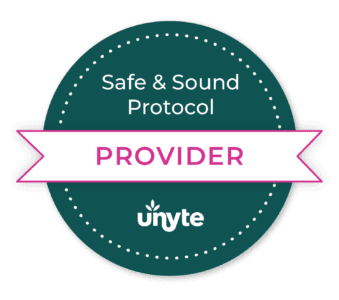Have you ever felt like your brain is working against you? Maybe you're struggling with anxiety, depression, or ADHD, and you're tired of feeling like you're not in control. Or perhaps you're simply looking for a way to improve your focus, concentration, and overall mental performance. Whatever your goals, neurofeedback therapy may be the solution you've been searching for. Think of neurofeedback therapy as having a personal trainer for your brain, guiding it to function at its best.
As a Licensed BCN with over a decade of experience, I've had the privilege of witnessing the transformative power of neurofeedback firsthand. By harnessing the latest advances in brain science and technology, we can help you unlock your full potential and achieve a greater sense of calm, clarity, and confidence.
Table of Contents
Understanding Neurofeedback Therapy: How It Works
So, what is neurofeedback therapy, exactly? In a nutshell, it’s a type of training that helps your brain learn to function more efficiently and effectively. By using real-time feedback and exercises, we can help you identify and change patterns of brain activity that may be contributing to your symptoms. The visual and auditory feedback helps reshape brainwave patterns over time, encouraging a more balanced and efficient brain state.
During a neurofeedback therapy session, you’ll sit comfortably in a chair and watch a movie or play a game on a screen. The twist is that the movie will dim or clear in response to your brain activity, or the game will stall or proceed. This visual feedback acts like a reward for your brain, gently nudging it to make positive changes. It’s like your brain is getting helpful hints, adjusting itself without you even realizing it.
The process is rooted in neuroscience and taps into your brain’s natural ability to adapt and change—what we call neuroplasticity. From your perspective, the training may feel quite passive. You’re simply sitting in a chair, watching a movie, and receiving feedback. However, behind the scenes, your brain is actively processing the feedback and making adjustments. It’s not uncommon to feel tired or even hungry afterward because your brain has been working so hard!
How Neurofeedback Therapy Can Help
Neurofeedback training (NFT) is a powerful tool for addressing a wide range of symptoms and improving overall brain function. Unlike other treatments that target symptoms directly, neurofeedback works by addressing the underlying brain patterns that contribute to these symptoms.
At Cypress Counseling & Wellness, we’ve seen NFT be particularly effective in addressing:
Emotional Health:
- Reducing anxiety symptoms by normalizing overactive brainwave patterns.
- Improving mood regulation, helping with irritability and emotional outbursts.
- Enhancing stress resilience by training the brain to better manage hyperarousal.
- Decreasing trauma-related symptoms, such as flashbacks and heightened startle responses.
- Supporting the reduction of depressive symptoms by increasing activity in brain regions linked to motivation and positive emotions.
Behavioral Health:
- Improving impulse control by enhancing self-regulation and executive function.
- Alleviating symptoms of attachment disorders by fostering a sense of calm and safety in the nervous system.
- Reducing oppositional behaviors by helping the brain learn more adaptive responses to frustration.
- Addressing attention-seeking behaviors through better emotional regulation.
- Supporting behavioral interventions for children with Autism Spectrum Disorder (ASD) by promoting neural connectivity.
Cognitive Performance:
- Enhancing focus and concentration by training attention-related brainwave patterns.
- Improving memory and recall by optimizing the brain’s working memory systems.
- Strengthening executive functions, including planning, organization, and time management.
- Supporting faster cognitive processing speed, making everyday tasks feel less mentally exhausting.
- Boosting learning abilities in individuals with learning disabilities, aiding in reading, math, and information retention.
Physical Health:
- Reducing the frequency and severity of migraines by normalizing irregular brainwave patterns.
- Alleviating symptoms of chronic pain by promoting better regulation of pain-related neural pathways.
- Improving sleep quality and duration by addressing dysregulated brain activity associated with insomnia.
- Supporting recovery from traumatic brain injury (TBI) by enhancing cognitive function and reducing symptoms like dizziness and headaches.
- Helping with fatigue and brain fog by optimizing the brain’s energy regulation and alertness levels.
It’s essential to understand that NFT doesn’t “treat” conditions like ADHD, anxiety, or migraines directly. Instead, it helps address the underlying brain inefficiencies that contribute to these symptoms. By improving brain function across emotional, behavioral, cognitive, and physical health, neurofeedback can have a profound impact on daily life and overall well-being. By acknowledging the complexities of the brain and the limitations of diagnostic labels, we focus on what truly matters: helping individuals find relief from distressing symptoms and enhance their quality of life.
Brain Mapping with QEEG
Understanding Your Unique Brain
At Cypress Counseling & Wellness, we use a comprehensive brain mapping technique called QEEG (Quantitative Electroencephalography) to gather valuable insights into your brain’s activity. This non-invasive procedure involves wearing a cap fitted with sensors to record EEG data across your brain. It’s completely painless and offers a detailed look at how your brain functions.
Preparing for Your QEEG Session
To ensure accurate results, we provide guidelines for preparing for your QEEG session. This includes things like avoiding alcohol and other substances that can influence the EEG for several days, hair products to use or not use, and ensuring that you are rested and have eaten during the recording.
What the Brain Map Reveals
It’s essential to understand that QEEG cannot determine causation, only correlation. This means we can identify patterns and connections between brain activity and symptoms, but we cannot pinpoint specific causes or events. For example, we may find that individuals with a particular symptom tend to exhibit certain brain patterns, but we cannot conclude that the symptom is caused by those patterns. Similarly, we may identify markers for trauma, but we cannot determine the nature or timing of the traumatic event.
That being said, there is a large and growing body of research that guides our interpretation of these maps. We have a solid understanding of which brainwave patterns are often linked to specific symptoms, allowing us to create more targeted and effective treatment plans. The primary purpose of the QEEG is to establish a strong, personalized treatment plan tailored to your unique brain function. By analyzing the data, we can identify specific patterns and connections between brain activity and symptoms, enabling us to develop a more effective approach to your care.
However, we approach this work with humility. The brain is the most complex system in the known universe, and while our knowledge base is strong, there will always be more that we don’t yet understand. Our goal is to use what we do know to provide informed, compassionate care while remaining open to the continuous learning that comes with each unique case.
But beyond the technical benefits, the QEEG can have a profound impact on your emotional and psychological well-being. For many clients, seeing the data from their brain map can be a huge relief. It helps to depersonalize symptoms, shifting the focus from perceived character flaws to wiring issues. This newfound understanding can help clients relax, let go of shame, and start untangling the web of negative self-talk that has held them back. With this new perspective, we can work together using neurofeedback to help your brain learn to function more effectively.
The Science Behind Neurofeedback Therapy
Neurofeedback therapy has a robust research foundation, with decades of studies supporting its efficacy for a variety of conditions. While neurofeedback may sound like a new or alternative approach to mental health, it is actually rooted in well-established neuroscience. It leverages the brain’s natural ability to change—a phenomenon known as neuroplasticity.
Over the years, numerous studies have demonstrated that neurofeedback can produce meaningful changes in brainwave patterns, leading to symptom improvement in conditions like ADHD, anxiety, depression, PTSD, migraines, and more. Here’s a closer look at some of the research supporting its use:
1. ADHD:
Neurofeedback was previously recognized as a Level 1 “Best Support” intervention for ADHD by the American Academy of Pediatrics. While its status has been revisited, recent research still supports neurofeedback’s effectiveness in managing ADHD symptoms, particularly when using standard protocols like theta/beta ratio (TBR), sensori-motor rhythm (SMR), and slow cortical potential (SCP) training.
Studies have shown that around 30 to 40 sessions of TBR neurofeedback can lead to significant improvements in attention and impulse control, with some results comparable to those of stimulant medications like methylphenidate. Additionally, these studies suggest that neurofeedback might offer lasting benefits, with some children showing superior post-treatment academic performance. However, ongoing research continues to explore the specific mechanisms by which neurofeedback impacts cognitive functioning in ADHD, emphasizing the importance of using evidence-based protocols to achieve optimal outcomes.
2. Anxiety and Depression:
Research has found that neurofeedback can be highly effective in reducing symptoms of anxiety and depression. Anxiety often correlates with excessive high-frequency brainwave activity, while depression can be linked to underactivity in the brain’s left frontal lobe. Neurofeedback works to normalize these patterns, resulting in reduced intensity and frequency of symptoms. Unlike medications, which primarily manage symptoms, neurofeedback trains the brain to develop new, healthier ways of functioning, offering a potential long-term benefit.
3. PTSD and Trauma:
Neurofeedback has shown promise in addressing trauma-related symptoms and post-traumatic stress disorder (PTSD). Trauma can cause dysregulation in the brain, leading to symptoms such as hypervigilance and emotional numbness. Neurofeedback helps stabilize the brain, reducing hyperarousal and promoting emotional balance. By teaching the brain to self-regulate, neurofeedback facilitates a reduction in distressing symptoms, aiding the process of trauma recovery.
4. Migraines and Chronic Pain:
Studies indicate that neurofeedback can significantly reduce the frequency and severity of migraines by training the brain to regulate its response to pain. By normalizing brainwave patterns associated with pain processing, neurofeedback offers an alternative to traditional pain management methods, especially for those who experience limited relief or adverse effects from medications. Additionally, neurofeedback has been linked to improvements in managing chronic pain conditions by enhancing the brain’s ability to modulate pain perception.
5. Cognitive Decline and TBI:
For individuals experiencing age-related cognitive decline or recovering from a traumatic brain injury (TBI), neurofeedback can play a supportive role. Research suggests that neurofeedback can enhance cognitive function by promoting better neural connectivity, improving attention, processing speed, and memory. By reinforcing healthier brainwave patterns, neurofeedback aids in restoring cognitive abilities and optimizing overall brain health.
While neurofeedback is not a direct treatment for specific conditions, it addresses the underlying brain patterns that contribute to these symptoms, creating a ripple effect on emotional, cognitive, behavioral, and physical health. The evidence supporting neurofeedback is extensive, though ongoing research continues to explore the mechanisms behind its effects. This growing body of literature underscores the importance of using evidence-based protocols and tailoring interventions to each individual’s needs.
For those interested in diving deeper into the science, the International Society for Neurofeedback & Research (ISNR) offers an extensive bibliography of neurofeedback studies. As our understanding of neurofeedback evolves, so does its potential to improve mental health and cognitive functioning across various conditions.
Neurofeedback Therapy: How Do I Actually Do It?
The Training Process: Frequency and Focus
We recommend starting neurofeedback by training at least twice a week. Think of it like a workout for your brain. You can go to the gym once a week, but the results will take much longer to show. Similarly, infrequent neurofeedback sessions might lead to slower progress, causing you to lose motivation or believe the therapy isn’t working. We want you to experience results and stay invested in the process long enough to achieve your goals!
We understand that making room for training takes time and energy. That’s why we do everything possible to ensure that your resources are used wisely. Our goal in every service we offer is to help you achieve your goals as quickly as we can, but with wisdom and without rushing. As a practice, our hope is to “work ourselves out of a job!” Over time, we’ll reduce the frequency of sessions to consolidate your brain’s new learning and cement your improved baseline.
How Long Does Neurofeedback Take?
The duration of neurofeedback therapy varies for each individual. On average, we find that 30-40 sessions are needed to see lasting change, but this depends on several factors: the complexity and scope of the issues, how quickly your brain learns new patterns, and, crucially, the supportiveness of your home environment.
Many people are surprised to learn just how vital the environment is to lasting change, healing, and growth. Neurofeedback can do a lot, but it’s not a standalone solution. If the conditions around you aren’t conducive to change, progress can be limited. For example, when parents bring their child in for frustration tolerance training but the home is filled with constantly flared tempers and high stress, the child’s brain struggles to adopt and maintain the new patterns we’re working on. It’s like trying to heal a burn while repeatedly exposing the skin to the fire—it just won’t heal properly, no matter how much you salve and bandage it in between exposures. In these cases, we often recommend that parents engage in their own counseling or parent coaching to help create a more supportive family environment for the changes they want to see in their child.
It’s also crucial to set realistic expectations for improvement. Neurofeedback can significantly enhance your quality of life, but it’s not about creating a “perfect brain.” We work with clients to find a livable baseline that reduces distress and improves functioning. Remember, none of us are free from life’s challenges, and aiming for an idealized state can set us up for frustration. We’re here to help you achieve meaningful, sustainable growth, but it’s important to consider all the factors that contribute to that change, including your surroundings and the efforts of those around you.
Tracking Progress: How We Know It’s Working
There are two key components to tracking progress in neurofeedback: the data and, most importantly, symptom relief.
1. The Data
During neurofeedback training, we continuously monitor the brain’s activity to ensure that learning is happening. One way we do this is by tracking z-scores, a statistical measure that indicates how far a specific brainwave pattern deviates from what is considered the average, or “normal,” for a person of the same age and gender. In simple terms, if a z-score is high or low, it means that the brainwave is significantly different from typical patterns, which can be linked to certain symptoms or difficulties.
As we progress through training, we monitor these z-scores to see if they’re moving toward more balanced levels, indicating that the brain is learning and adjusting. We also check the data regularly to look for trends in learning. For instance, if we’re conducting SMR (sensorimotor rhythm) training for ADHD, we pay close attention to ensure that SMR is increasing in amplitude over time, as this is often associated with improvements in focus and impulse control.
Sometimes, the changes in the data are quite subtle—and that’s okay. Subtle changes can still lead to significant symptom relief. The key here is that we’re looking for patterns that show the brain is moving in the right direction, even if it’s a gradual process.
2. Client Feedback
While the data is important, the most critical piece is always symptom relief. The ultimate goal of neurofeedback training isn’t to simply bring certain brainwave patterns into a “normal” range; it’s to help you feel more settled, less hyperactive, calmer, or whatever specific improvements we’re working toward. This is why we work closely with clients (and their loved ones, if possible) to identify the specific changes they are hoping to see.
Each session, we gather feedback on what you’re noticing in your daily life. For example, if sleep is the issue, we might track how many times you wake up during the night or how long it takes you to fall asleep. By establishing these personal metrics, we ensure that any changes, even the subtle ones, are acknowledged and celebrated. Our busy lives make it easy to overlook incremental progress, so we make it a point to keep our eyes on the goals, not just the numbers.
By combining data analysis with ongoing feedback, we get a well-rounded picture of your progress, allowing us to make any necessary adjustments to the treatment plan to support meaningful and lasting change.
Conclusion
Neurofeedback is a powerful tool that taps into your brain’s natural ability to change, offering a unique approach to managing a wide range of emotional, behavioral, cognitive, and physical health concerns. From the initial brain mapping with QEEG to the individualized training sessions, the process is designed to help you achieve your goals in a targeted and personalized way. While neurofeedback is not a quick fix, the combination of careful data monitoring, personalized feedback, and a supportive environment can lead to meaningful and lasting improvements in daily life.
We understand that the journey to change can be complex and sometimes requires more support than you might initially expect. At Cypress Counseling & Wellness, we are here to help guide you every step of the way, combining neurofeedback with coaching or counseling to maximize your growth.
If you’re interested in learning more about how neurofeedback might benefit you or your loved ones, we invite you to contact us. We’re here to answer any questions and help you explore whether neurofeedback is the right fit for your journey toward a more balanced and fulfilling life. Let’s work together to unlock your brain’s potential!
-

Exploring the complexity of people and their stories, finding and celebrating redemption, strength, and courage in the wake of suffering, and seeking purpose and meaning in daily life—these are the pursuits I share with my clients. Every day, I’m in awe of the impossible things they accomplish. Truly, how lucky am I? Outside of my practice, I soak up life with my husband, three kids, a house full of animals, and more chickens than I ever expected.
View all posts
 (281) 305-9387
(281) 305-9387









